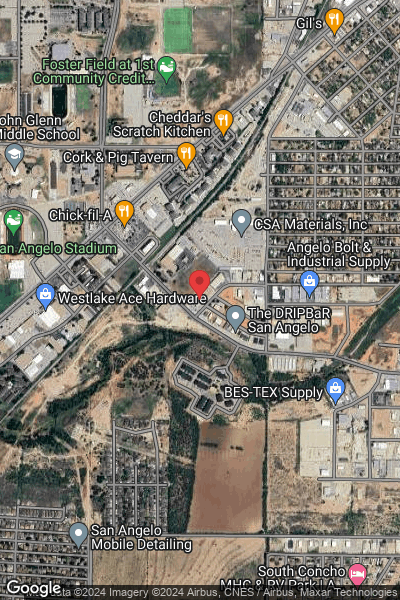Wood Floor Water Damage Repair
Water damage is a prevalent concern for homeowners with wood flooring, and addressing it promptly is crucial to prevent further complications. Neglecting water damage can lead to severe consequences, including mold growth, structural issues, and decreased property value.
Discover the Craftsman Hardwood Flooring Difference in San Angelo, Texas
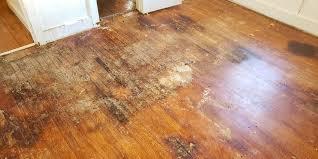
Identifying Water Damage on Wood Floors
Water damage can wreak havoc on wood floors, causing various signs that indicate its presence. Recognizing these signs early is essential to address the issue promptly and prevent further damage. Here are some common indicators of water damage to wood floors and steps to conduct a thorough inspection:
1. Warping:
Warping occurs when moisture penetrates the wood, causing it to swell and distort. Look for boards that appear warped or have a raised or uneven surface.
2. Discoloration:
Water damage often leads to discoloration of wood flooring. Watch out for dark spots, stains, or areas where the wood appears discolored compared to its usual hue.
3. Cupping:
Cupping is a condition where the edges of the wood boards are higher than the center, forming a concave shape. This occurs when moisture causes the wood to swell unevenly.
4. Buckling:
Buckling is severe water damage where the wood boards lift from the subfloor. It creates noticeable bulges or ripples across the floor surface.
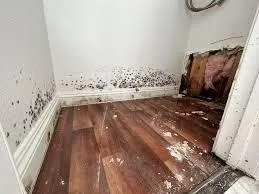
Understanding the Causes of Water Damage
Water damage on wood floors can stem from various sources, each posing unique risks to the integrity of the flooring. It's crucial to grasp the underlying causes to prevent and mitigate damage effectively. Here's an exploration of the factors that commonly lead to water damage on wood floors:
1. Leaks:
Leaky roofs, windows, or pipes can introduce water into your home, damaging wood flooring. Even minor leaks can result in significant issues over time if addressed.
2. Flooding:
Natural disasters like floods or heavy rainstorms can inundate your home with water, causing extensive damage to wood floors and other structures. Proper waterproofing and drainage systems are essential for flood prevention.
3. Plumbing Issues:
Faulty plumbing fixtures, such as burst pipes, leaking faucets, or damaged water supply lines, can release water onto your wood floors. Regular maintenance and prompt repairs are crucial to prevent plumbing-related water damage.
4. High Humidity Levels:
Elevated humidity levels in your home can lead to moisture buildup on wood floors, promoting conditions favorable for mold growth and wood rot. Proper ventilation and dehumidification can help control humidity levels and prevent damage.
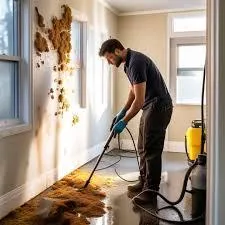
Steps for Water Damage Floor Repair
Repairing water-damaged wood floors requires a systematic approach to ensure thorough restoration and prevent further damage. Here's a step-by-step guide outlining the process:
1. Assessment and Moisture Testing:
Begin by assessing the extent of the water damage and conducting moisture testing to determine the moisture levels in the affected area. Use moisture meters to identify areas that require attention.
2. Removal of Damaged Boards or Sections:
Remove the damaged boards or sections of the wood flooring carefully, taking care not to cause further damage to surrounding areas. Use a circular saw or oscillating tool to cut along the seams and remove the affected pieces.
3. Subfloor Inspection and Repair:
Inspect the subfloor beneath the damaged wood flooring for any signs of moisture or structural damage. Repair any issues, such as rot or mold growth, before installing new flooring.
4. Replacement or Repair of Damaged Flooring:
Depending on the extent of the damage, either replace the removed boards with new ones or repair the existing ones. If the damage is minimal, you can sand down the affected areas to remove stains and imperfections.
5. Sanding, Refinishing, and Sealing:
Once the repairs are complete, sand the entire floor surface to ensure a smooth and even finish. Apply a fresh finish coat or sealant to protect the wood and restore its appearance. Allow sufficient time for the finish to dry before allowing foot traffic on the floor.
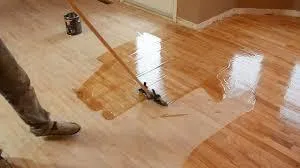
Tips for DIY Repairs and Professional Assistance:
DIY repairs can be suitable for minor water damage issues, such as small stains or surface scratches. However, seeking professional assistance for more extensive damage or structural problems is advisable.
If you need clarification on your DIY skills or the damage's extent, consult a professional flooring contractor who can provide expert advice and assistance.
Remember to prioritize safety during the repair process by wearing appropriate protective gear, such as gloves and goggles, and following safety guidelines for power tools.
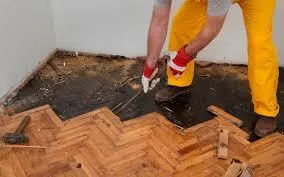
Cost Considerations for Water Damage Floor Repair
Repairing water-damaged floors involves several factors that can influence the overall restoration cost. Here's a breakdown of cost considerations to help you understand the expenses involved:
1. Extent of Damage:
The severity and extent of the water damage play a significant role in determining the cost of repairs. Minor damage, such as surface stains or small areas of warping, may be less expensive to repair than extensive damage that requires replacing large sections of flooring.
2. Type of Wood Flooring:
The type of wood flooring affected by water damage can also impact repair costs. Exotic or specialty wood species may be more costly to repair due to the higher cost of materials and specialized techniques required for restoration. Engineered hardwood flooring may offer a more cost-effective repair option than solid hardwood.
3. Labor Fees:
Labor costs associated with water damage floor repair can vary depending on factors such as the repair work's complexity, the affected area's size, and the contractors' expertise. Skilled professionals may charge higher rates for their services, but they can ensure quality repairs and a satisfactory outcome.
4. Comparison with Replacement:
When assessing the cost-effectiveness of repairing versus replacing water-damaged floors, it's essential to consider the overall condition of the flooring, the extent of the damage, and your budget constraints. Repairing the damaged areas may be more economical than replacing the entire floor. However, replacing the floors entirely may be a more practical long-term solution if the damage is extensive or the flooring is outdated.
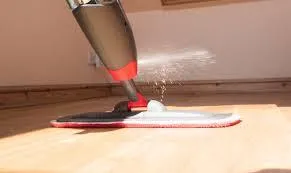
Preventive Measures and Maintenance Tips
To safeguard your wood floors from water damage and ensure their longevity, it's crucial to implement preventive measures and follow proper maintenance practices. Here are some effective strategies to protect your floors:
1. Install Proper Sealing:
Ensure your wood floors are properly sealed with a high-quality finish to create a protective barrier against moisture infiltration. Regularly inspect the sealant for signs of wear and reapply as needed to maintain optimal protection.
2. Use Area Rugs:
Place area rugs or mats in high-traffic areas, such as entryways and kitchens, to provide an extra layer of protection against spills and moisture. Choose rugs with non-slip backing to prevent accidents and ensure stability.
3. Address Leaks Promptly:
Be vigilant in promptly addressing any leaks or water-related issues in your home. Inspect plumbing fixtures, appliances, and areas prone to water damage regularly and repair any leaks or damages immediately to prevent them from escalating.
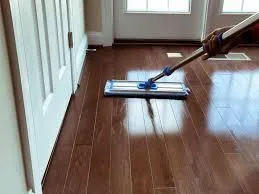
Maintenance Tips for Wood Floors:
1. Regular Cleaning:
Keep your wood floors clean by sweeping or vacuuming them regularly to remove dust, dirt, and debris. Use a damp mop with a mild hardwood floor cleaner to clean the surface gently, avoiding excessive moisture.
2. Maintain Humidity Levels:
Maintain consistent indoor humidity levels between 30% and 50% to prevent wood floors from expanding or contracting excessively due to moisture fluctuations. Use a humidifier or dehumidifier as needed to regulate humidity levels year-round.
3. Inspect for Signs of Damage:
Regularly inspect your wood floors for signs of damage, such as warping, cupping, or discoloration. Address any issues promptly to prevent further damage and preserve the integrity of your floors
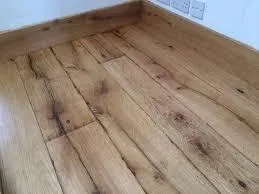
Case Studies and Success Stories:
Real-life examples of successful water damage floor repairs serve as testaments to the effectiveness of professional restoration services. Here are some case studies and testimonials from satisfied customers who experienced remarkable transformations and restoration of their damaged floors:
"After experiencing water damage to our wood floors, we were devastated. However, with the expert repair services provided by Craftsman Hardwood Flooring, our floors were restored to their original beauty, exceeding our expectations." - John D.
Call to Action:
Please don't wait until it's too late! Contact Craftsman Hardwood Flooring today for professional water damage repair services. Schedule a free consultation or estimate, and take proactive steps to safeguard your wood floors against water damage.
DISCOVER
THE CRAFTSMAN DIFFERENCE
With award-winning third-generation craftsman, Matt Garcia.
FAQS
What is the difference between hardwood and engineered hardwood flooring?
Hardwood flooring is made from solid planks of wood. Engineered hardwood flooring is made with a plywood core and a thin veneer of hardwood on top. Hardwood flooring is more expensive than engineered hardwood flooring, but it is also more durable and can last for many years. Engineered hardwood flooring is less expensive than hardwood flooring, but it is not as durable and may need to be replaced sooner.
What is the best way to clean and maintain my carpet?
The best way to clean and maintain your carpet is to vacuum it regularly and have it professionally cleaned once a year. When vacuuming your carpet, be sure to use a vacuum cleaner with a beater bar to remove dirt and dust from the fibers. When having your carpet professionally cleaned, be sure to choose a reputable company that uses a cleaning method that is appropriate for your type of carpet.
What is the best way to protect my floors from water damage?
The best way to protect your floors from water damage is to avoid spills and leaks. If you do have a spill or leak, be sure to clean it up immediately. You can also protect your floors from water damage by placing mats and rugs in high-traffic areas and by sealing your floors regularly.
TRANSFORM YOUR HOME WITH A CLICK
Why wait for elegance? A free, personalized estimate from Craftsman Hardwood Flooring is just a click away. Join a growing community who have elevated their homes with our exquisite, award-winning flooring designs. Matt Garcia and his team are committed to bringing your vision to life with precision and passion.
Get Your No-Obligation, Free Estimate: Simply fill out our quick form, and we'll provide you with a personalized estimate that aligns with your unique needs and preferences.
See the Difference for Yourself: Browse our gallery of stunning installations and read real testimonials from our satisfied clients.
Let's Create Something Beautiful Together: Start your journey towards a home that truly reflects your style and sophistication. Request your estimate now and step into the world of Craftsman Hardwood Flooring!
Here at Craftsman Hardwood Flooring, we understand that your home is a reflection of your personal style and taste. That's why we offer top-quality hardwood flooring solutions designed to elevate the beauty and functionality of any space.
With our easy-to-use form, you can request a no-obligation, free estimate for your project. This personalized estimate will provide you with an accurate understanding of the costs involved in creating the perfect hardwood floors for your home.
But don't just take our word for it - see the difference for yourself by browsing through our gallery of stunning installations. These real-life examples showcase the exceptional craftsmanship and attention to detail that goes into every project we undertake.
Still not convinced? Take a look at what our satisfied clients have to say
LOCATION
Craftsman Hardwood Floors
958 Arroyo St.
San Angelo, TX 76903
Main Office: (888) 841-8453
QUICK LINKS
COPYRIGHT © 2023
ALL RIGHTS RESERVED. // PRIVACY POLICY // TERMS AND CONDITIONS

